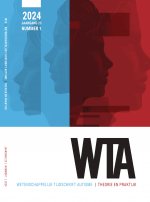
Eenzaamheid en autisme
Productgroep WTA 2024-1Omschrijving
Eenzaamheid, een discrepantie tussen de gewenste en werkelijke sociale verbinding, is voor veel mensen met autisme een dagelijkse realiteit. Dit artikel belicht de complexiteit van eenzaamheid en sociale verbondenheid, waarbij het verkennen van perspectieven van jongeren op het spectrum in de schoolcontext centraal staat. Op school socialiseren leerlingen en ontmoeten ze elkaar. Autistische leerlingen moeten echter veel prikkels verwerken en daarbij ervaren ze geregeld pesterijen, beledigingen, onbegrip en uiteindelijk eenzaamheid.
De eerste stap naar een school waarbinnen elke leerling zich welkom en gehoord voelt, en zich positief kan ontwikkelen, is de schoolomgeving. Veel schoolomgevingen zijn evenwel onvoldoende afgestemd op de diverse behoeft en van autistische en andere leerlingen die niet ‘mainstream’ zijn. Scholen hanteren vaak impliciete waarden en normen die autistische leerlingen onbedoeld benadelen en buitensluiten, en stigmatisering bevorderen. Maar ook de fysieke omgeving van de school maakt het autistische leerlingen vaak vrijwel onmogelijk om met medeleerlingen te socialiseren wanneer daaraan behoeft e is. Aanpassingen in het schoolbeleid en architectuur kunnen bijdragen aan een omgeving die toegankelijk, veilig en prettig is voor diverse leerlingen (Rieff e & Koutamanis, 2023). Ons onderzoeksproject ‘Build 4 Belonging’, dat in 2024 begint, richt zich op de primaire voorwaarde om kansengelijkheid te bevorderen: een omgeving geschikt voor verschillende typen leerlingen, gebaseerd op individuele wensen, behoeft en en capaciteiten.
SUMMARY
Loneliness, defi ned as a mismatch between the desired and actual social connectedness, is a daily reality for many autistic people. Th is article highlights the complexities of loneliness and social connectedness, focusing on the perspectives of youth on the spectrum in the school context. School is the place where students meet and socialize. Yet, it is also where autistic students must process many stimuli, and often experience bullying, insults, misunderstanding, and ultimately loneliness. To build a school in which every student feels welcome and heard, and can develop optimally, the first step concerns the school environment. Many school environments are not sufficiently tailored to the diverse needs of autistic students, and other students who are not ‘mainstream’. Implicit values and norms are often applied in schools, which unintentionally disadvantage and exclude autistic students and promote stigmatization. Moreover, the physical environment of the school often makes it impossible for autistic students to socialize with fellow students when the need arises. Adjustments to school policy and architecture can contribute to an environment that is accessible, safe and pleasant for diverse students. Our research project ‘Build 4 Belonging’, which will start in 2024, focuses on the precondition for promoting equality of opportunity: an environment that is suitable for different types of students, based on individual wishes, needs and capabilities.
